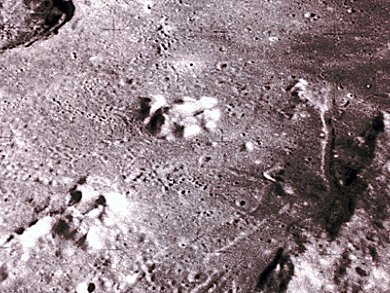The Moon possesses strong magnetic anomalies that are enigmatic given the weak magnetism of lunar rocks. A number of increasingly complex theories to explain this exist. Mark A. Wieczorek, Université Paris Diderot, Saint-Maur des Fossés, France, and colleagues proposed a surprisingly simple explanation: the magnetic anomalies are remnants of a massive asteroid collision approximately 4 billion years ago, leaving behind an enormous crater and iron-rich, highly magnetic rock.
Most of the magnetic anomalies are scattered around the rim of an enormous, 2,400 km-diameter crater known as South Pole-Aitken. The oldest definitive structure on the Moon, the crater is between 3.9 and 4.5 billion years old, and is slightly elongated, suggesting it was formed by an object that struck the moon at an oblique angle.
The scientists modeled the impact and formation of the basin using computer codes that are typically used to model explosives. They modeled a number of scenarios using faster or slower impacts and more shallow or more vertical angles. Each time, the model produced similar results to what is see on the Moon.
The results suggest that it may also be true that extra-terrestrial materials play a larger role in the magnetic fields of other planets than anyone has appreciated.
- An Impactor Origin for Lunar Magnetic Anomalies,
Mark A. Wieczorek, Benjamin P. Weiss, Sarah T. Stewart,
Science 2012, 335(6073), 1212–1215.
DOI: 10.1126/science.1214773




